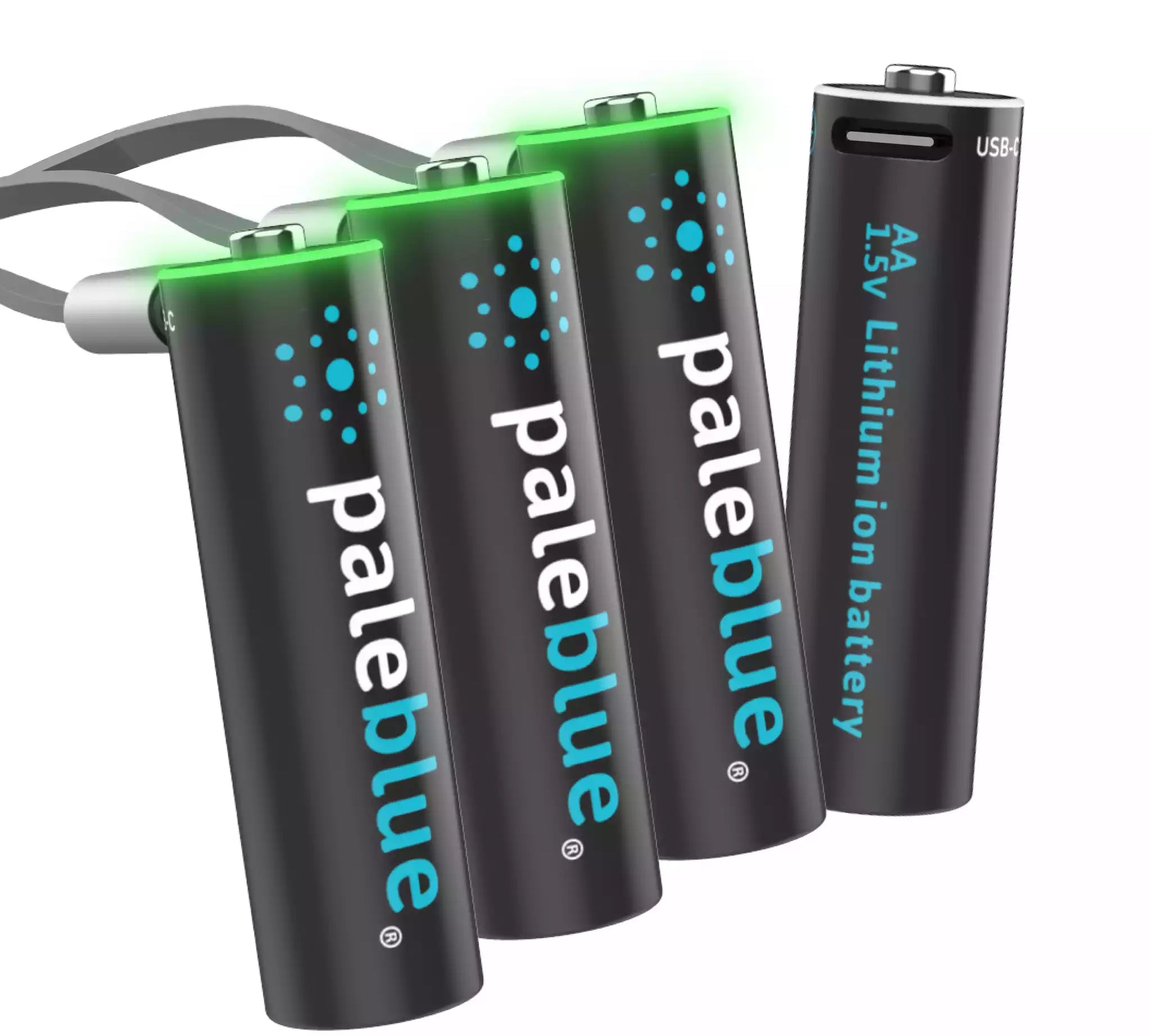NiCd vs NiMH Batteries: What’s the Difference?

Last updated: November 2025
Walk into any electronics store or browse online, and you're likely to come across the acronyms NiCd and NiMH when shopping for rechargeable batteries. At first glance, they might seem like a jumble of letters, but these battery types are essential to understand, especially if you want to get the most out of your devices. While our batteries use Li-ion and our own battery management system, it’s still good to learn about other types of batteries.
1. What Are NiCd and NiMH Batteries?
NiCd Batteries (Nickel-Cadmium)
NiCd batteries have been around since the early 20th century and were once the go-to rechargeable option for everything from power tools to cordless phones. As the name implies, they use nickel oxide hydroxide and cadmium as electrodes. These batteries are known for their durability and ability to deliver consistent performance, even under demanding conditions.
NiMH Batteries (Nickel-Metal Hydride)
NiMH batteries came onto the scene in the late 1980s and were developed as a more environmentally friendly and higher-capacity alternative to NiCd. They also use nickel oxide hydroxide, but the negative electrode is a hydride-absorbing alloy instead of cadmium.
NiMH batteries quickly became popular in consumer electronics because they offer more power and pose fewer environmental risks.
2. Clear Differences
Let’s start with a quick comparison:
|
Feature |
NiCd |
NiMH |
|
Energy Density |
Lower |
Higher |
|
Memory Effect |
Yes (more significant) |
Yes (but less severe) |
|
Self-Discharge Rate |
Low (holds charge longer) |
High (discharges more quickly) |
|
Cycle Life |
Longer |
Shorter (but improving) |
|
Environmental Impact |
Contains toxic cadmium |
More environmentally friendly |
|
Charging Time |
Faster |
Slower |
|
Cost |
Typically cheaper |
Generally more expensive |
3. Energy Density: How Much Power Can You Get?
This is where NiMH batteries shine. NiMH batteries have a much higher energy density, meaning they can store more energy in the same physical size as a NiCd battery. That’s a big deal for devices like digital cameras or game controllers that demand a lot of juice. For example, a typical AA NiMH battery might offer 2000 to 2500 mAh (milliamp-hours), compared to 600 to 1000 mAh in a NiCd of the same size. That’s more than double the capacity.
Winner: NiMH
4. The Infamous “Memory Effect”
If you’ve used rechargeable batteries before, you may have heard of the memory effect. It’s when a battery “remembers” the smaller capacity you’ve been using and stops charging beyond that point—even if it has more room. NiCd batteries are notorious for this. If you don’t let them fully discharge before recharging, they can start to lose capacity quickly. NiMH batteries can also experience a memory effect, but it’s far less pronounced, especially in newer models.
Sidenote: Our batteries are made using Lithium Ion and engineered to NOT have this memory effect. If you’re interested in rechargeable batteries that outwork both NiMH and NiCd, then consider ours, which you can find here.
5. Self-Discharge: How Long Does the Battery Stay Charged?
Ever pick up a device you haven’t used in a while, only to find the batteries dead? That’s self-discharge at work. NiCd batteries have lower self-discharge rates, meaning they hold their charge longer while sitting unused. They’re ideal for things like emergency flashlights or backup devices that don’t get used daily but are certainly handy to have around.
NiMH batteries, on the other hand, lose their charge more quickly (sometimes up to 30% per month!). That said, newer “low self-discharge” NiMH batteries have greatly improved in this area.
Winner: NiCd (but low self-discharge NiMH is catching up)
6. Cycle Life: How Long Will the Battery Last?
Cycle life refers to how many times you can charge and discharge a battery before it starts to degrade.
NiCd batteries are famous for their long cycle life (some can go through 1,000+ cycles and still perform reliably). As a result, they’re often used in power tools and industrial applications.
NiMH batteries typically have a shorter cycle life, around 500 cycles, though newer versions are getting better every year.
Winner: NiCd
7. Environmental Concerns
Here’s where NiMH batteries take the lead.
NiCd batteries contain cadmium, a heavy metal that is toxic to humans and harmful to the environment. Improper disposal can lead to soil and water contamination, which is why many regions have strict regulations on how they must be recycled.
NiMH batteries are much safer to dispose of and don’t contain heavy metals like cadmium or lead. They're still recyclable (and should be!), but they pose significantly less environmental risk.
Winner: NiMH
8. Charging Times and Behavior
NiCd batteries typically charge faster and are more forgiving of charging mistakes. You can accidentally overcharge a NiCd battery without immediately ruining it (though it's still not recommended).
NiMH batteries tend to take longer to charge and are more sensitive to overcharging, which can reduce their lifespan or cause overheating. Using a smart charger with an auto shutoff feature is highly recommended for NiMH batteries.
Winner: NiCd (but technology helps NiMH catch up)
9. Price: What’s the Cost Difference?
In general, NiCd batteries are cheaper to produce and buy. This makes them an attractive choice for budget-conscious buyers or for applications where performance matters more than capacity or environmental impact.
NiMH batteries cost more upfront, but the added capacity and eco-friendliness can justify the price—especially for consumer electronics where higher power is useful.
Winner: NiCd for budget, NiMH for value
10. Which One Should You Choose?
Here’s a quick cheat sheet:
|
Use Case |
Recommended Battery Type |
|
Power tools |
NiCd (for ruggedness and durability) |
|
Digital cameras |
NiMH (for higher capacity) |
|
Remote controls and toys |
NiMH (longer runtime) |
|
Emergency devices (flashlights) |
NiCd or low-discharge NiMH |
|
Eco-conscious consumers |
NiMH |
|
Applications with frequent use |
NiMH |
|
Industrial or legacy systems |
NiCd (if required by design) |
11. Quick Tips forANY Battery User
No matter which type you choose, here are some friendly tips for getting the most out of your rechargeable batteries:









